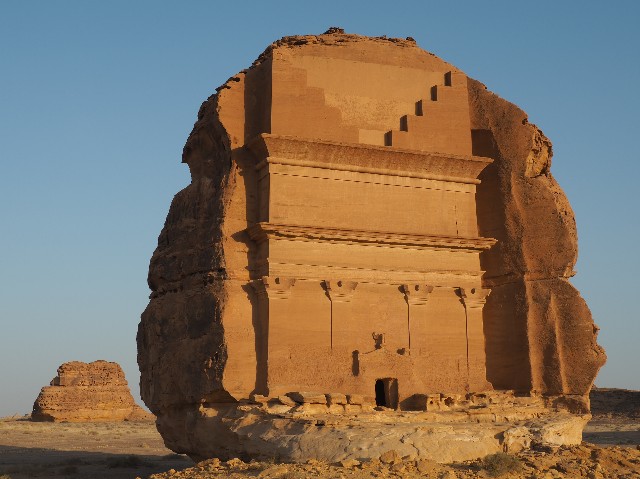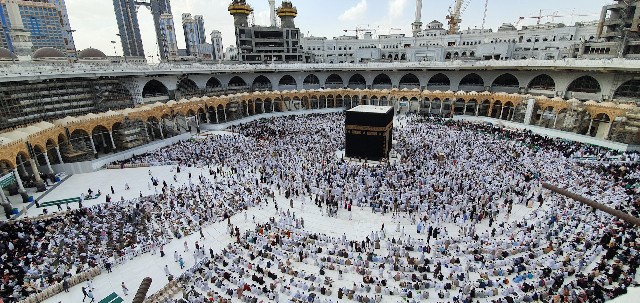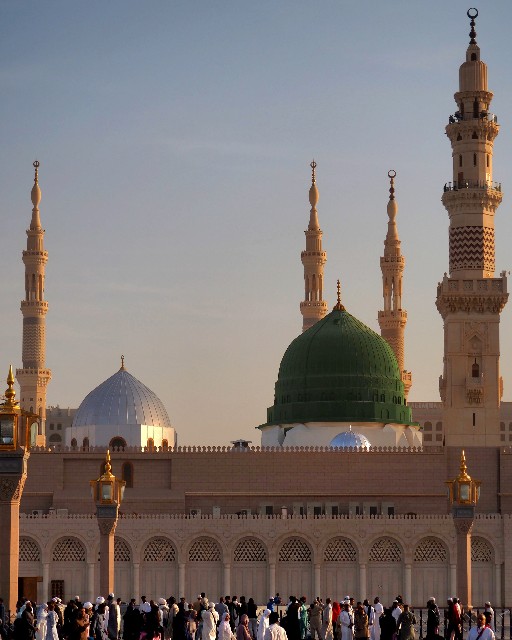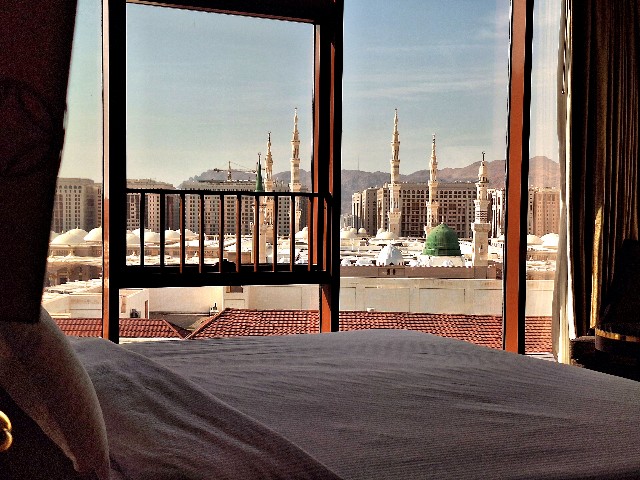Summer in the Arabian Peninsula’s desert is famously known for its extreme heat, especially from June to August when temperatures exceed 40°C (104°F) almost daily and sometimes approach 50°C (122°F). However, unlike Japan’s humid summer heat, the summer in Arab and Middle Eastern regions is characterized by extremely low humidity despite the very high temperatures. Because of this, many people wonder, “Compared to Japan’s sticky summer, might the dry, crisp summer of the Middle East actually be more comfortable?”
Curious about the Middle Eastern summer, I decided to visit various cities in Saudi Arabia to experience the heat firsthand. As someone who tends to be heat-sensitive and sweats easily, high-temperature environments aren’t my forte, but in this article, I’d like to share my experiences with those planning a trip to the Middle East, describing the temperature and humidity in each city, as well as the differences in heat and livability compared to Tokyo, Japan.
A Scorching Inferno That Reverses Day and Night

The Saudi lifestyle: avoiding the hot daytime sun and being active at night
One commonly discussed aspect of Saudi Arabia’s heat is the nationwide “day-night reversal lifestyle.” In Saudi Arabia, especially during summer, a day-night reversed lifestyle has become widespread to avoid the severe heat. During summer days, temperatures can approach 50°C (122°F), and to avoid such high-temperature environments, people limit their daytime activities and shift to nighttime when it’s cooler.
During this period, many companies and offices are known to operate at night for efficiency. Restaurants, cafes, and shops also adopt an irregular schedule, closing during the day and opening at night. These examples illustrate the severity of Saudi Arabia’s summer heat.
Summer Heat Report by City
Now, I’d like to report on my actual sensory experiences of the heat in each city. Although we can generally say it’s over 40°C (104°F), the perceived heat varies greatly depending on humidity, wind, and other factors. Below, I’ll describe each city along with its structural characteristics.
1. AlUla: Characterized by Dry Heat

AlUla, famous for the Hegra archaeological site, doesn’t offer daytime Hegra tours in summer.
Located inland in the Hejaz (Red Sea coast) region, AlUla (also called Ula) reached a July high of 45°C (113°F), while humidity was just 10%. The sun beating down on the city felt like a rain of fire, and being active in the blazing sun felt like being roasted. However, despite the high temperature, using a parasol or wrapping a shemagh (scarf) made it more bearable than I expected. Due to the low humidity, I didn’t get drenched in sweat, and the dry climate made it surprisingly comfortable.

The Old Town becomes a ghost town during the day. Most shops open at 4 PM.
Like being in a desert oasis, it was relatively comfortable in the shade even without air conditioning. Particularly when exploring AlUla Old Town, there was plenty of shade suitable for avoiding the heat. That said, even if the heat feels tolerable, it’s dangerous to stay outdoors for long periods in an environment where the outside temperature exceeds body temperature. If you visit in midsummer, I recommend taking breaks in air-conditioned indoor spaces.
2. Medina: Heat Waves Brought by Strong Winds

The Prophet’s Mosque, usually overflowing with pilgrims, is sparse during the day
In Medina, the highest temperature rose to 47°C (116.6°F), while humidity was around 10%, similar to AlUla. The heat here was even more severe, and walking through the city felt like being in a sauna.
On some days, strong winds blew, feeling like heat waves enveloping your entire body. Generally, we imagine that wind brings coolness, but when the temperature exceeds body temperature, it feels even hotter, like heat waves in a sauna. This dry, strong wind also dried out my eyes, leaving me in a constant state of dry eye with unstoppable tears. It felt like having sand blown into my eyes.
When active during the day, it’s important to take breaks in appropriately air-conditioned indoor spaces. On the other hand, once the sun sets, comfort increases dramatically, and nighttime Medina becomes like another world, much more livable. Especially when evening prayer time arrives, the coolness envelops the city, and the sight of people gathering in the cool night breeze is impressive.
By the way, I drank an astonishing 7 liters of water per day in Medina. Although the low humidity meant my clothes didn’t get sticky with sweat, it seems I was sweating profusely without realizing it. In Medina, body fluids are rapidly depleted beyond what you perceive, so frequent hydration is essential!

It was so hot that I finished a 5L bottle of Zamzam water in just half a day.
3. Jeddah: A Coastal City with High Humidity

The famous historical district Al-Balad is also nearly a ghost town during the day.
Jeddah is located along the coast with relatively high humidity at around 40%. The temperature, at 41°C (105.8°F), was relatively lower compared to other cities. However, the humidity left me constantly drenched in sweat. It felt like being in a tropical rainforest, with sweat pouring down like a waterfall. Just walking for about an hour left my T-shirt so soaked with sweat that it could have dripped water if wrung out. However, this heat doesn’t last all day; in the evening hours, the heat settles considerably, allowing for walks without feeling stressed by sweat.

During the day, a walk in the Corniche area with cool sea breezes is recommended
In the coastal Corniche area, air cooled by seawater is carried by the wind, making it feel quite cool despite the temperature. It feels almost like a natural air conditioner from the sea. When night falls and temperatures drop, the sea breeze brings even more coolness, making the coastal area very pleasant. In nighttime Jeddah, you can see people gathering by the sea, enjoying the cool night breeze.
4. Riyadh: A City in the Middle of the Desert

Again, not a soul walking outside in midday Riyadh. The city’s heritage landmark, At-Turaif Heritage Site in Diriyah, is only open from evening during summer.
Riyadh is located in the middle of the desert, and the highest temperature rose to 46°C (114.8°F). Combined with its geographical location in the heart of the desert, humidity was low at under 20%, but the daytime heat was quite remarkable.
The Riyadh sun was like a blazing flame, and I could distinctly feel my energy being sapped while exposed to direct sunlight. However, with the dry climate, the perceived temperature wasn’t that high, and my impression was that you could manage to be active in the blazing midday sun if you used a parasol.
On the other hand, compared to AlUla, it was a bit easier to sweat, and frequent breaks in malls were essential. In the metropolis of Riyadh, enjoying interactions with locals while cooling off in malls and cafes is one of the pleasures. Also, at night, the desert coolness envelops the city, making it comfortably livable as if the daytime heat was a lie.
Summary
After visiting several cities, I honestly realized that if you can endure a Japanese summer, Saudi Arabia’s summer is certainly not impossible. In fact, the daytime hours when locals avoid going out due to the heat can be a great opportunity for those of us accustomed to Japanese heat to explore the cities.
Through this city comparison, my personal perceived temperature ranking was: Tokyo ≫ Medina > Jeddah > Riyadh ≫ AlUla. It was an unexpected discovery to re-experience just how incredibly hot Tokyo is! (laughs)
However, since the type of heat varies by city and region, different countermeasures are needed depending on where you visit. The dry heat of inland areas can sometimes feel surprisingly comfortable compared to Japan’s humid summers, but the summer in Gulf regions like the United Arab Emirates and Kuwait might be even more intense due to humidity. When visiting the Middle East in summer, it’s important to check the climate information for each city in advance and take appropriate precautions.
Try to find ways to cope with the heat by incorporating the lifestyle and techniques of local people, and create wonderful travel memories!
![[World’s First Dragon Ball Theme Park] Shenron Descends in Saudi Arabia! Opening Dates, Construction Site, and Prices Revealed](https://en.kosupatravel.com/wp-content/uploads/2024/12/20240328093236-1024x576.png)

![Tasting the Sacred Water from Mecca’s Zamzam Well! Flavor, Benefits, and How to Get It [Zamzam Water Review]](https://en.kosupatravel.com/wp-content/uploads/2025/03/20240717185410.jpg)


